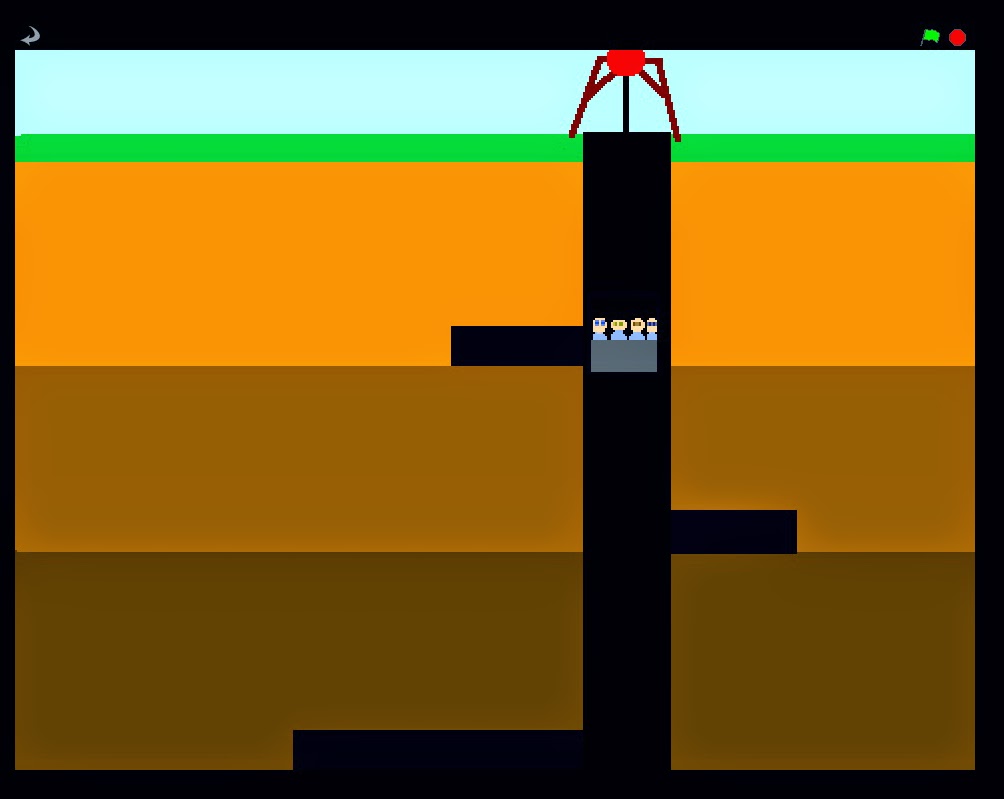When I work with schools developing IT in the curriculum, I like to have a theme. At the moment, I'm working on how to incorporate Scratch and other software and model-building (using motors and sensors) into "Iron-ore Mining".
First to raise it's head was designing a game in Scratch. I've worked on a few maze games recently and a mine could be just a vertical maze. Add in a bit of danger with a poisonous gas cloud and I think the children have got something to get there teeth into. That's the idea, what will they come up with?
 |
| Explosion |
 |
| Escape to Safety |
A couple of screenshots of my initial Scratch attempts for an Escape to Safety game.
 |
| Scratch file to accompany Lego WeDo model of a mine shaft life |
 |
| Model mineshaft and emergency pod |
Next, you need to move heavy stuff around so design a vehicle to bulldoze or pick-up rocks, a belt-transport system etc. There are similar examples out on the internet. So, another do-able project using Lego WeDo or K'nex and using Scratch for the coding.
Can we make it more like real life? The Chilean Mining Disaster in 2010 has been one of the most tweeted about events ever. Following on from the the explosion in our "maze" game, how could we rescue a trapped miner? Some wrapping-paper tubes, some Lego and cotton and we have "Design and make a working rescue pod to bring the miners up to the surface in a safe and gentle manner". Use Scratch for the programming.
I also like to add in musical and historical references if possible, and after starting to sing "New York Mining Disaster 1941" by the Bee Gees, I thought I'd go for a bit more relevance with Martin Carthy's versions of the "Trimdon Grange Explosion"* and "Springhill Mine Disaster"**. (Carthy actually recorded the Bee Gees song on his "Signs of Life" album.)
Looking on You Tube gave me the idea of providing children with images and sound so that they could create a presentation in Photostory, Movie Maker, PowerPoint or Smart Notebook. Alternatives include using Comic Life or some of the 2Simple Collection to tell the the history of local mining.
*The Definitive Martin Carthy (2003)
** Signs of Life (200?)
No comments:
Post a Comment